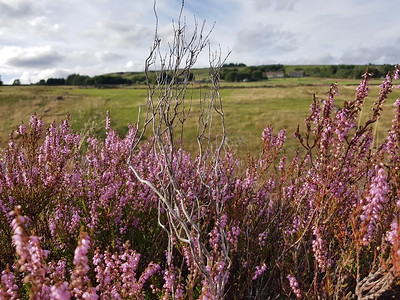The name Brontë Country was given to a picturesque landscape in the Pennines, which is known for having been the location where several stories of the Brontë novels took place. The low mountain range in North England below the Scottish Borders is famous for its vast heathlands, whose pink blossoms turn the Pennines into a dreamy rural mountain paradise during summer and early fall. The roughness of the rocky highland region combined with soft tones of tender flowers sets the stage for Brontë classics such as Wuthering Heights and Jane Eyre with the Brontë birthplace in Thornton being just around the corner.

Those familiar with British literature very well know about the unique influence the Brontë sisters had on it during the Victorian era. In a time where female authors were struggling to gain recognition in their male dominated profession, they became a beacon of emancipation by self-publishing their work under male pseudonyms. Inspired by the landscapes of the Pennines, their novels should draw a more sensitive and emotionally deep picture of the Victorian society, laying focus on the personal tragedies and class conflicts of their protagonists.
A very tragic female figure of literature herself, namely Sylvia Plath, is buried in Heptonstall. Her story reminds us of the inner struggles many authors are facing until today and which equally are the strength of their creativity and lyrical greatness as well as hardest challenge to overcome. World famous are her lyrical works, such as Ariel or The Bell Jar, which together with her biography of life-long struggle granted her a status as symbol of women's movement all around the world.
Embedded in this, literature-wise meaningful ambient for female writers lays the Arvon writers house. Founded in 1968 by poets John Moat and John Fairfax as a retreat for young students with a knack for writing, it today offers writing and poetry courses to an international community of aspiring poets.
Unnecessary to say, that wandering the paths of the Brontë sisters in the Pennines holds some very special experiences for female writers in particular. This not only regarding literature, but also in form of magnificent nature spots as source for inspiration. From the Bride Stones near Todmorden over the valleys of Calderdale to the Kirklees forests on the Edge of Bradford, the landscape shapes the wanderer's imagination into a journey of self-reflection and muse...
Keine Kommentare:
Kommentar veröffentlichen